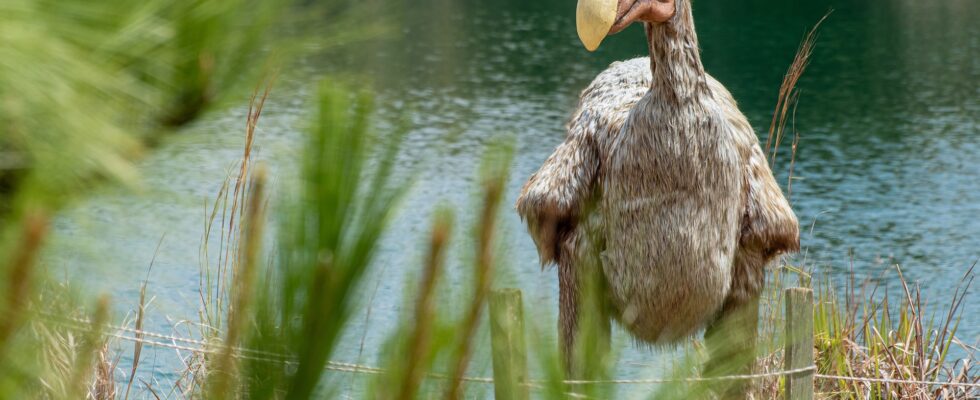Scientists want to devote themselves to the bird which has disappeared for a few centuries, with the aim (among other things) of raising public awareness of the gradual extinction of many species.
Human beings have had a significant impact on the fauna and flora that surround them for more than 12 millennia. However, human civilization has greatly accelerated its development, changing more and more territories and affecting the planet as a whole. Biodiversity is bearing the brunt of the consequences of this expansion, to such an extent that today we speak of a 6e mass extinction, directly caused by human activities. The story of the dodo is undoubtedly one of the most striking examples.
Recreating a genome from related species
Living on Mauritius, the dodo has never faced predation. When Europeans arrived on its territory in the 17th century, very docile and unsuspecting, this large bird was quickly exterminated, directly and indirectly by humans and other introduced species. The company Colossal Biosciences has asked biologist Beth Shapiro and her team to carry out work aimed at its “de-extinction”.
The latter explains that it will be impossible to bring back an identical copy of the bird. But since it is genetically close to other still living species, such as the Nicobar pigeon or the Rodrigues solitaire, it will be possible to compare different genomes to identify the particular mutations that make the dodo look like a dodo. From there, it would be possible to recreate one.
There is, however, a significant complication: most cloning and gene-editing technologies are geared towards mammals. Putting a cloned embryo into an egg to hatch a new generation will be a scientific feat that is likely to take much longer than rebuilding the genome itself. But, Shapiro remains optimistic: “ We know we can grow these cells in some species, so we know we can do it. Now we have to do all the experiments. »
An approach that is not limited to laboratories
When it comes to working on the genome, ethical questions
emerge. Tom Gilbert, director of the Center for Evolutionary Hologenomics
the University of Copenhagen, explained to Vice that the reconstitution
of a species is only the beginning of the process. There are still questions
around what is considered a dodo or not. ” That
do we measure? Genomic similarity? Physical similarity? There
similarity in the niche it fills and what it does, even though it has no
not the same appearance? For example, if you can make an elephant live in the cold and behave like a mammoth…is that enough? »
This raises the question of whether it is worth it. Here too, it’s not all black or all white. Sometimes perhaps, but in other cases, the environment has already changed so much that the hope of seeing populations live freely is far from realizable.
The academic, however, relativizes the situation by observing that, even if it can be difficult to reintroduce such species, it would be an effective means of raising public awareness of the plight of endangered species. A sentiment shared by Shapiro: “ Since everyone is thinking about extinction and dodo simultaneously, this is an opportunity to raise awareness a little more about what is going on. »
Holocene Park
Since 2021, Colossal has also been involved in the reintroduction of the woolly mammoth and the thylacine (or Tasmanian tiger). It hopes to be at the origin of new technologies with multiple applications which would allow the reconstitution of threatened or disappeared ecosystems, but also the preservation of species threatened with extinction.
Ben Lamm, the head of the company, explains: There are many benefits from a conservation perspective, as we can learn from rewilding. ” He concludes : ” Any technology that we develop that has environmental protection applications, we want to subsidize it and give it to the world. Of course, any resemblance to the saga Jurassic Park is fortuitous. Although… birds, like the dodo, are indeed the descendants of dinosaurs…
Source : Vice

22